We nearly missed out on one of the highlights of our trip. If our home exchange in Budapest hadn’t fallen through, we would have passed over Washau altogether. It was Jean Michel’s fault, of course (he organised the itinerary and read the guide books!) but he he hadn’t realised it’s a Unesco World Heritage Site.
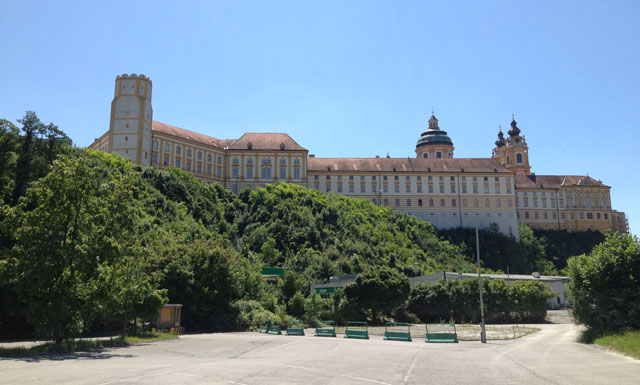
Melk and its famous abbey were on our list when we were in Aschach but in fact they were further than we thought – 125 K by bike – so after leaving Aschach early due to bad weather, I suggested we stop off at Melk on the way back from Budapest.
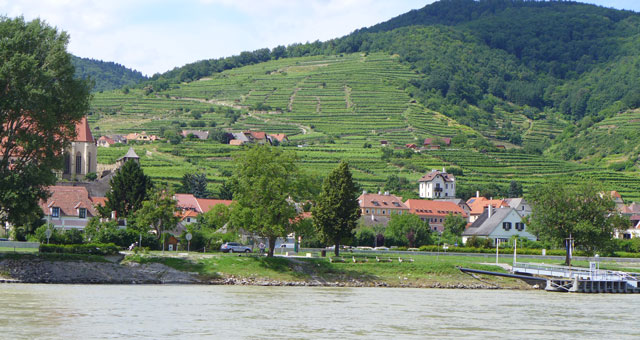
After consulting the Routard and checking the website, I phoned Weingasthof Donnauwirt at Weissenkirchen to see if they had a room for 2 nights. Bingo! As we neared our destination, we became more and more delighted. Quaint little villages, lovely scenery dotted with vineyards, panoramic views of the Danube. Exactly like the photos in our book and such a relief after the river banks around Budapest.
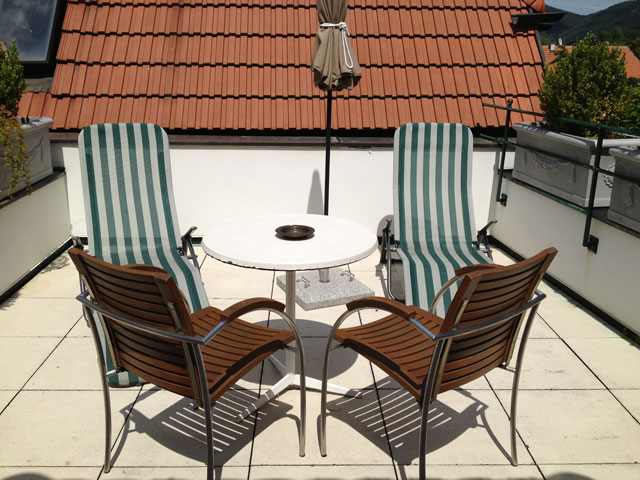
Our room in the gastfhof is beautifullly decorated and has a table and chairs in one corner which is much better than the last one where I had to use the laptop sitting up in bed and we had to have dinner perched on one side making sure we didn’t get the sheets dirty, but best of all, it has its own terrace.
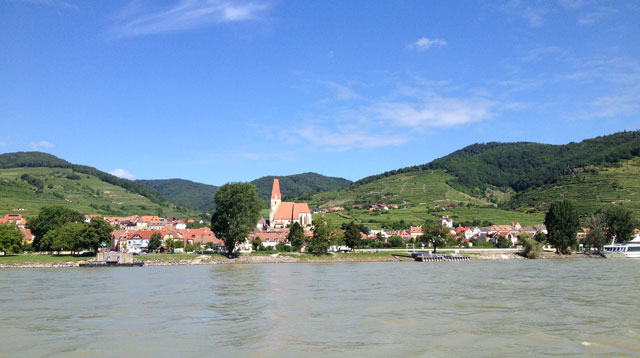
Weissenkirchen is perfectly located. Just opposite the hotel is the ferry that takes you across the Danube. There are bike paths on either side which meant we could cycle along one bank and back along the other.

Since we arrived at the gasthof around 2 pm, we had time to book in, get changed, go across on the ferry and ride to Krems which is on the eastern tip of the Wachau.
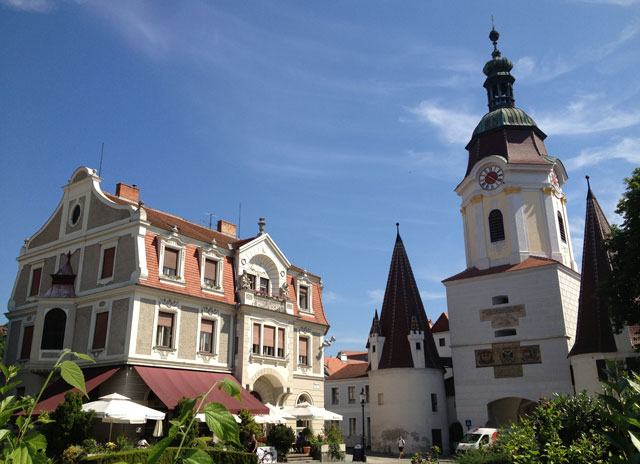
The entrance to Krems is via the Steiner Tor, built in the late 15th century, the only one of the four town gates still standing. There are various other buildings of interest including two churches and a mediaeval quarter worth visiting.
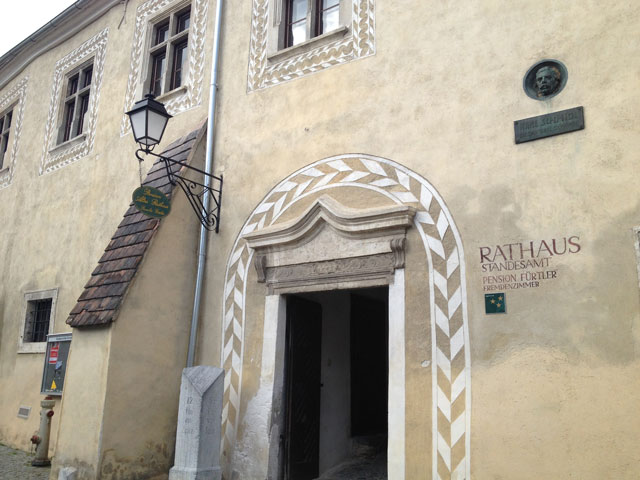
On the way back, we visited Durnstein, one of the most popular villages in the area. By then we had completely fallen in love with the area.
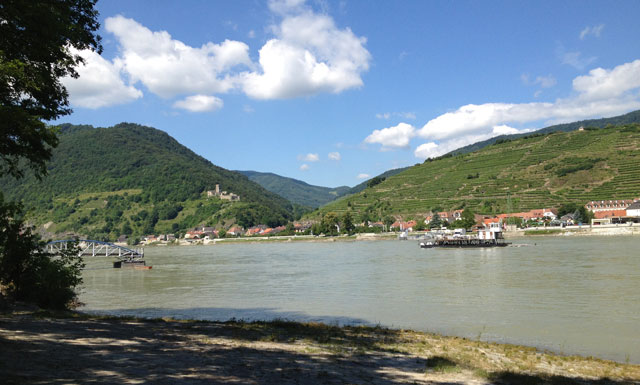
Next day, we crossed on the ferry again and rode 26 kilometers west this time, to Melk. We were definitely on the right side of the river because the prettiest villages are across the other side.
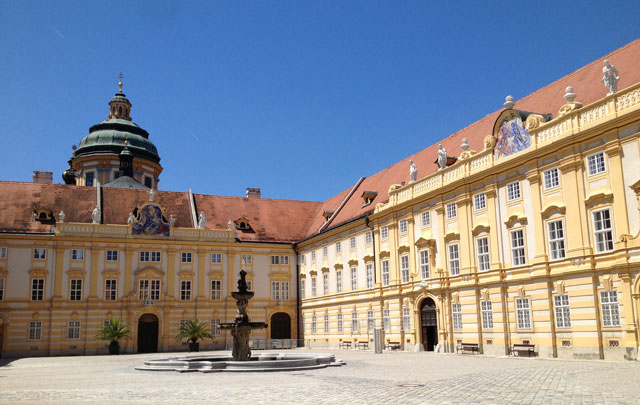
At Melk, we rode up to the Baroque Benedictine abbey built in the early 18th century which overlooks the entire valley and left our bikes in a bike shelter that even had lockers to leave our paniers. The Austrians are very organised.
The entrance was expensive at 9.50 euro each and we weren’t that taken with all the religious exhibitions.
However, the library with its numerous mediaeval manuscripts, including 750 incunables (books printed before 1501) was very impressive, though not nearly as extravagant as the one in Wiblingen Abbey in Germany.
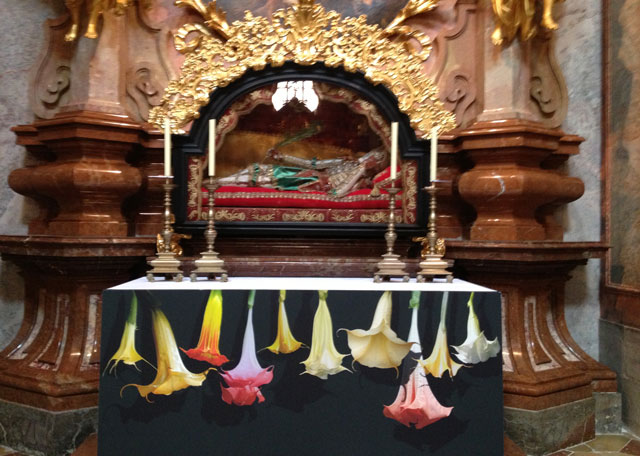
The baroque church, whose renovation was completed about thirty years ago, is absolutely dripping with gold. There was even a lady polishing up the main altar to make it even brighter. There are also some unfortunate modern paintings on the side altars.
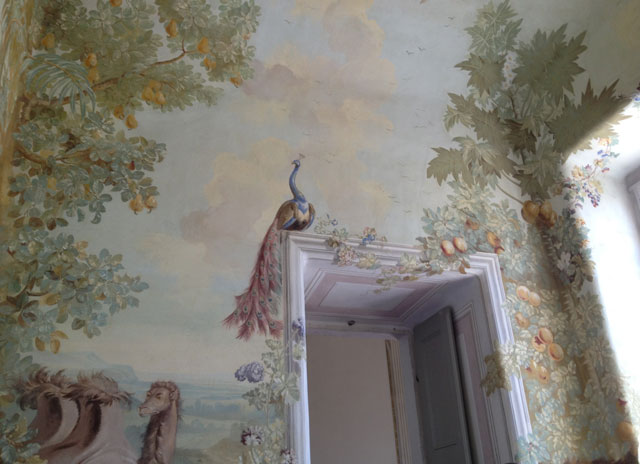
We had a cold drink in the summer house with its beautiful frescoes and admired the view from the garden behind. The Benedictines certainly picked a wonderful spot.
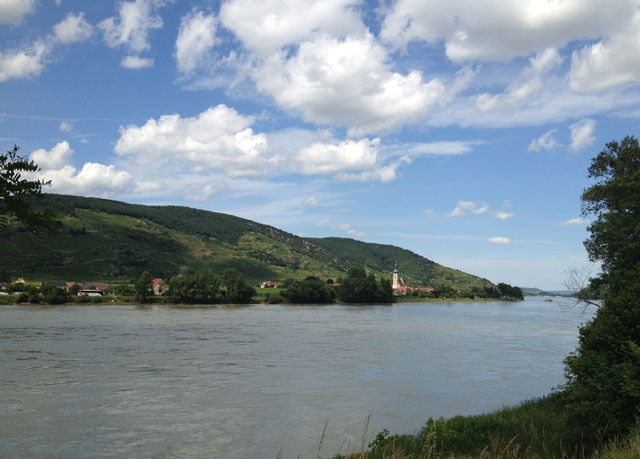
The trip back along the other side of the Danube was not nearly as exciting. Most of it wound through vineyards and apricot and cherry orchards. We even bought some fruit from a sulky wayside vendor. While we were there, a man pulled up in his truck and got out, wearing ledenhosen! They were even better from the front but I couldn’t take a discreet photo.
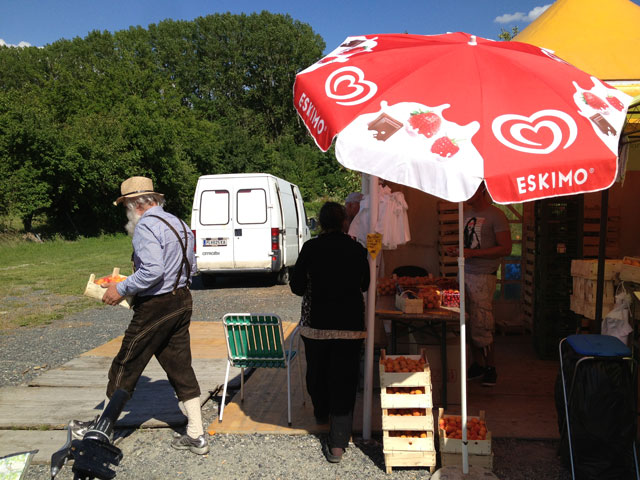
In the evening we dined al fresco in the hotel restaurant. The meal was expensive and disappointing, except for the wine which was excellent, reinforcing our usual practice of eating in middle-of-the-range family-run restaurants that cater to the locals.




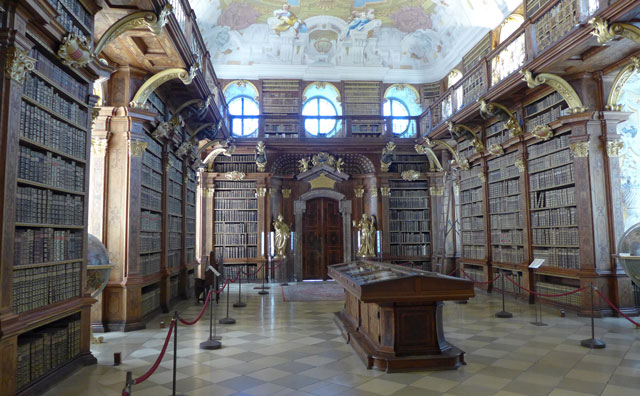
The river Danube is a great beautification river. I like travel on this river. It’s really so nice.